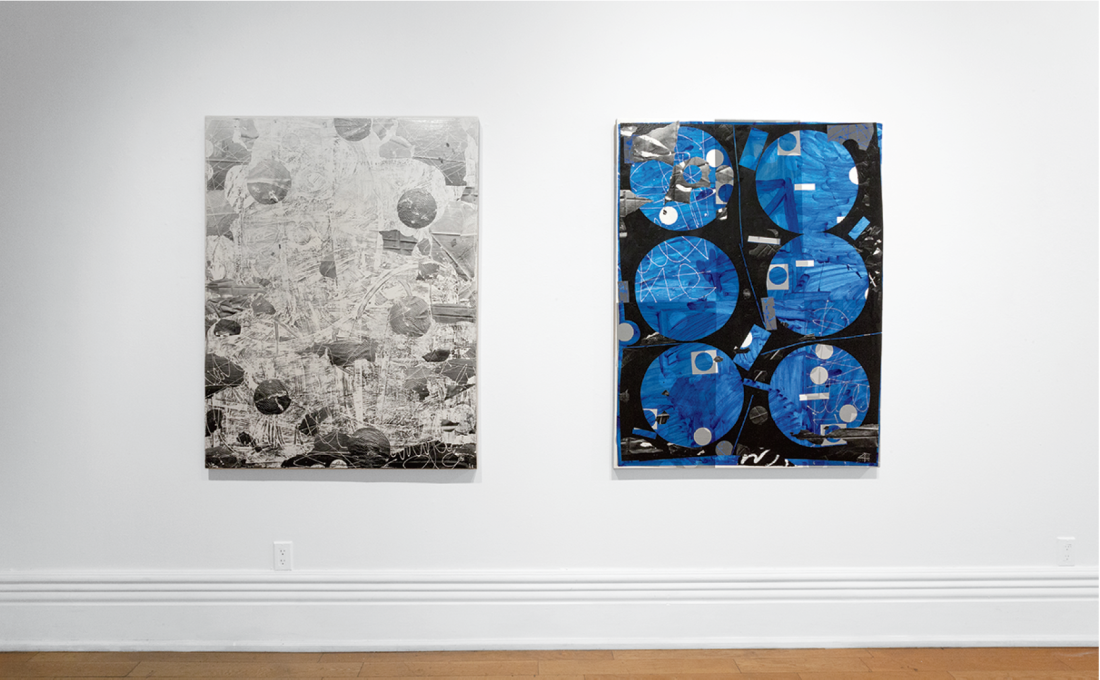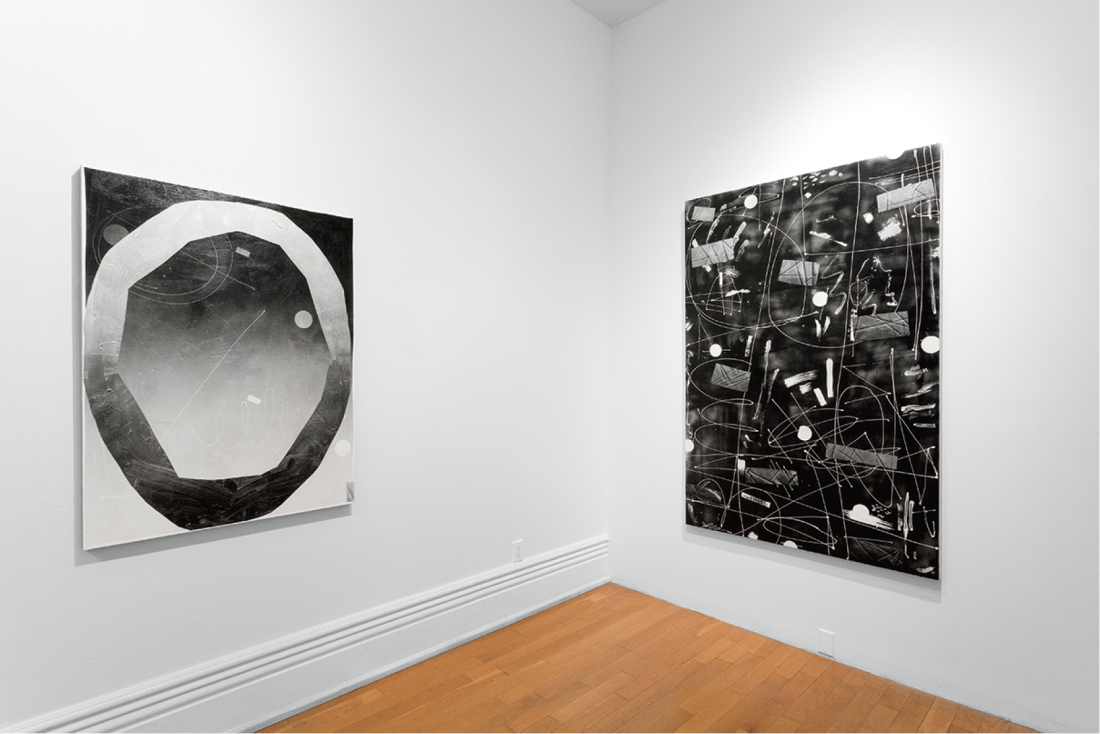Jason Deary
In the attention deficit disordered global art world, it’s probably more important for paintings to be photogenic than to be good. Although the rapid-fire Google image searching of our time provides obvious benefits for the mass distribution of art imagery (along with the near instantaneous glorification of their manufacturers), what makes a painting a painting is the immediate tactile nuances registered within its worked surface. Paintings are a unique vehicle for imagery because of their intrinsic material specificity. They are an image permanently married into a thing. Jason Deary’s first solo exhibition, “Roll Call,” at Katharine Mulherin Contemporary is a strong collection of small to mid-sized abstract paintings. They are really good paintings, and as a collection of works it is their quality that is their most important characteristic.

Installation view, Jason Deary, “Roll Call,” 2015. Courtesy Katharine Mulherin Contemporary Art Projects, Toronto.
There are two distinct trends among young abstract painting. The most prevalent is a neo-romantic, gestural abstraction characterized by bombastic colouration and a sloppy materiality endearingly referred to as “Crapstraction.” The second is a neo-formalist post-minimalism characterized by a restrained palette and reductive form. These works are likewise distinguished by a haphazard materiality, and are often referred to as “Zombie Formalism” for their seemingly mindless rehashing of a historicized style. Both of these trends privilege the act of making over any overt critical/conceptual interests as both types of practitioners see making as thinking. (Sharon Butler, for example, intellectually argued for this anti-intellectual approach in her 2011 Brooklyn Rail essay, “Abstract Painting: The New Casualists.”) The intentionally half-assed materiality of these works seeks out an aesthetic nook between the more traditional locations of good (like Motherwell and de Kooning) and bad (like Schnabel and Kippenberger). This deliberate mediocrity, as a new formal paradigm, has deeply problematized painting’s aesthetic field. Beyond complicating the act of awarding Bs to second year undergraduates, these works challenge the spectator to differentiate between knowingly mediocre and actually mediocre, ultimately forcing us to question what value such qualitative distinctions actually have.

Installation view, Jason Deary, “Roll Call,” 2015.
This brings us back to Jason Deary, and why his paintings feel so important for young painting at this moment. Although his eccentric compositions could convincingly chameleon themselves into Instagram searches for either Zombie Formalism or Hipster Crapstraction, his works break from both these trends through their convincing material specificity. Deary is clearly a young artist who has spent a lot of time looking at actual paintings and not just #paintings. His paintings have a profound yet subtle physical presence. Slabs of acrylic paint are built through layer upon layer of densely marked acrylic paint. These quarter-inch thick slabs are treated as raw collage material that he cuts and tears into shape, adhering them in place to their primed linen surface. These paint-collage marks effortlessly coalesce with more directly applied painting gestures so that it is difficult to differentiate between their distinctive applications. Colour is sparse throughout the exhibition, but when colour is used it means business, as out-of-tube cadmiums and cobalts explode from their otherwise grisaille compositions. Thick, brush-stroke-filled sections have been sanded and scraped, leaving the ghosts of their physical impression behind as a topographic impression over which newer strokes are dryly dragged. Deary’s use of a black, airbrushed mist throughout these works recalls both Jules Olitski and graffiti, but creates an overall impression reminiscent of photocopy style degradation: as if some unknown image were enlarged and xeroxed beyond the threshold of recognizability. These works are formally compelling, procedurally complex and materially innovative. They are the harmonious marriage of image and thing. Jason Deary has made real paintings, and they offer young painting a way forward beyond the doldrums of deliberate mediocrity. ❚
“Roll Call” was exhibited at Katharine Mulherin Contemporary Art Projects, Toronto, from December 11, 2015 to January 17, 2016.
Pete Smith is an artist and writer who lives in Bowmanville, Ontario. He teaches in the Department of Drawing and Painting at OCAD University.

